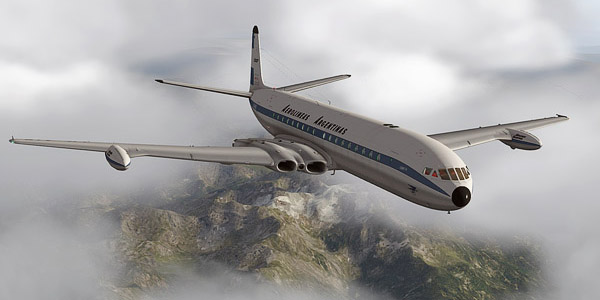
Comet 4
The structure was completely revised, with heavier gauge skin, oval windows, and reinforcement around apertures and butt straps. A new pressure testing tank was built in which an entire aircraft could be submitted to torture, simultaneously loading the fuselage by pressurisation while hydraulic rams acted on the wings. The whole process was accelerated so one “flight” occurred every 4 minutes. This enabled the Comet 4 to be certified for 30,000 hours use. Test airframe 6402 was tested to 100,000 hours.
By now, de Havilland's six-year advantage had been used up. The Americans had developed newer designs with more powerful engines, supporting larger aircraft. These had greater wing-sweep allowing faster, more efficient cruising and longer range. The need to land on short runways was less important because the entire World seemed to be gearing up for big jets. The first of this new generation of aircraft, the Boeing 707 entered service only nine days after the Comet 4.
There was some good news for the Comet. There was concern that the 707 might have teething problems, where the Comet was reliable. BOAC were trained and equipped to handle the Comet, which could go into service without delay. At its announcement in 1955, BOAC placed an order for 20 aircraft, and made history by opening the first jet service between London and New York. There were others who decided to choose the Comet, too. Pan Am hedged its bets, keeping its allocation of 3 Comets, but transferring the order to their subsidiary, Mexicana.
The Comet's relatively short take off and landing was still attractive. A special version was planned for internal American routes, called the 4A. It sacrificed fuel capacity for more seats, and had shorter wings to reduce drag at lower altitudes. The 4A didn’t happen, but a European equivalent, the 4B, was developed for BEA. It had capacity for up to 100 seats and an economical cruising speed of 530 mph at 23,500 ft; ideal for short city-hops. 18 Comet 4Bs were sold.
The Comet 4C was the most versatile, having the same wings and fuel capacity as the Comet 4, and the longer fuselage of the Comet 4B. It could either fly long distance, or medium distances with more seats.
